
6 out-of-the-box brainstorming templates to inspire creativity
Reading time: about 6 min
Topics:
While you’re undoubtedly accustomed to running stellar brainstorming sessions, you may eventually run into a situation that calls for a bit of an adjustment. Imagine this: Your team has been tasked with coming up with new campaign ideas. You gather the team together, get your template ready, start a timer, and…the ideas don’t flow. What should you do? Shake things up.
We’ve gathered six brainstorming templates that can help revitalize your brainstorming sessions, leading to fresh ideas. Read through the descriptions and choose the template that makes the most sense for your use case—or that just seems the most fun!
-
World explorer
The magic of the world explorer template lies in zooming out—way out. In fact, this method of brainstorming encourages your team to think creatively and expansively about different aspects of a company, industry, or subject that are different from your own to come up with new and innovative ideas. Investigating how other arenas are solving problems can inspire your team to come up with interesting methods of solving their own challenges.
How it works:
- Start by articulating the question the team should ultimately be answering.
- Determine a company, industry, or subject that’s unrelated to your own to investigate.
- Instruct your team to begin adding characteristics of this company, industry, or subject to the board using sticky notes.
- Dive deeper and explore how the company solves problems. Investigate, learn, and ask questions, then add discoveries to the board.
- Using what you’ve learned, add potential answers to your question to the board. Your team can then react to these sticky notes and determine what to do next.
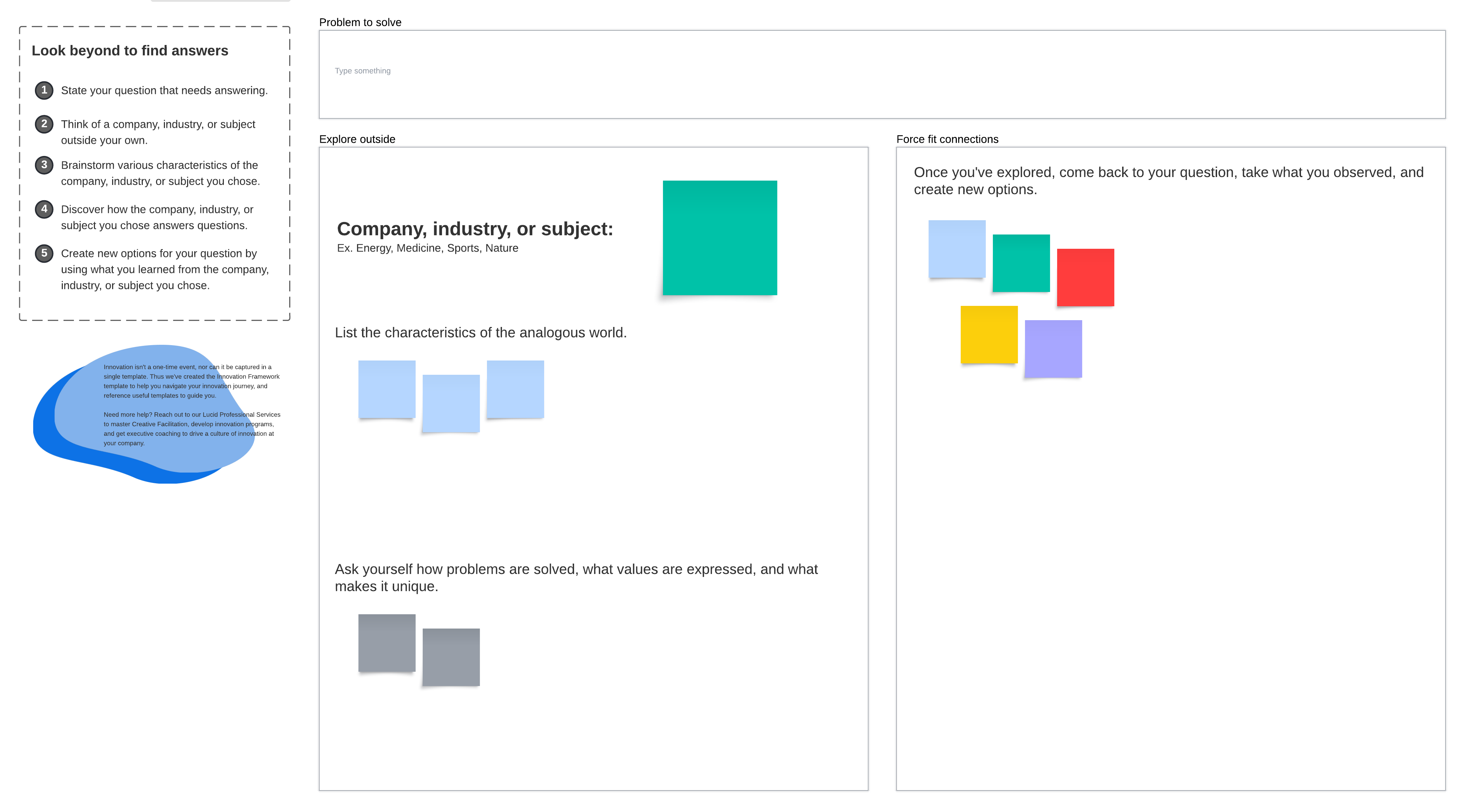
2. A better question
The world explorer template is great if you have a solid question to answer. But what if you don’t really know what to ask? And what if the question you think you wanted answered is actually the wrong question to ask? Enter the better question template. This template helps you generate the right question so you can get to the heart of what you really need. It helps ensure that you are addressing the fundamental issues and considering a broad range of possibilities before settling on a course of action.
How it works:
- Put your initial question down.
- Add sticky notes to each column, one at a time. Instruct team members to react to sticky notes.
- Follow the instructions for the final two boxes, then consider potential solutions or changes that can address the identified obstacles and lead to success. Encourage your team to think creatively, challenge assumptions, and explore alternative approaches.
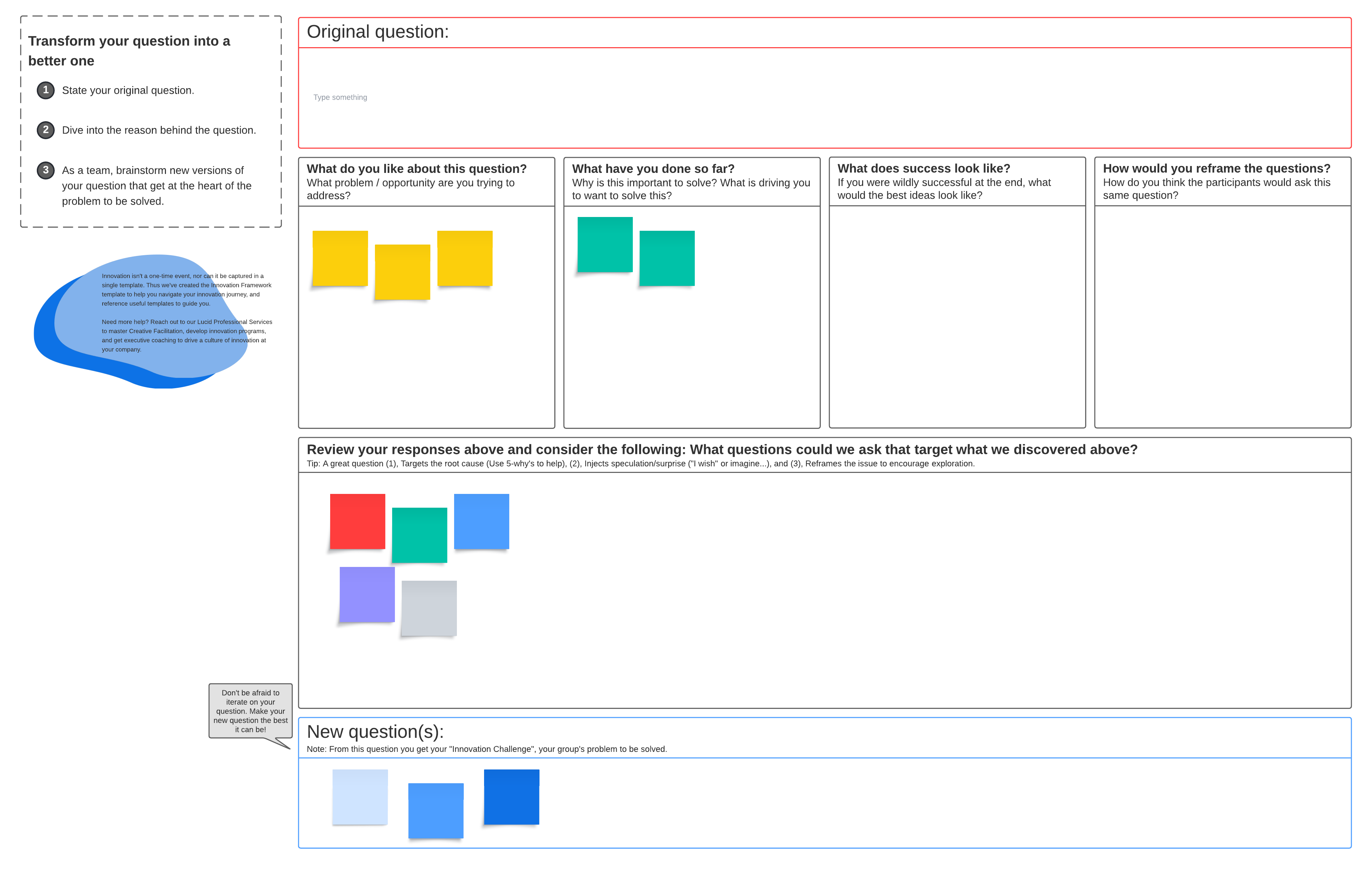
3. 6:1 idea tool
The 6:1 idea tool template is a fun way of ranking ideas. After all, brainstorming may take you from zero ideas to too many ideas, and then you’re faced with the issue of sorting through which ideas have merit and which aren’t the right fit.
How it works:
- Complete an initial brainstorming session.
- Copy the 6:1 idea tool template so that each team member has their own.
- Follow the instructions on the template adding sticky notes that pull in ideas from the completed brainstorming session.
- Whittle down the answers into one final idea that rules them all and prepare to present it to the group.
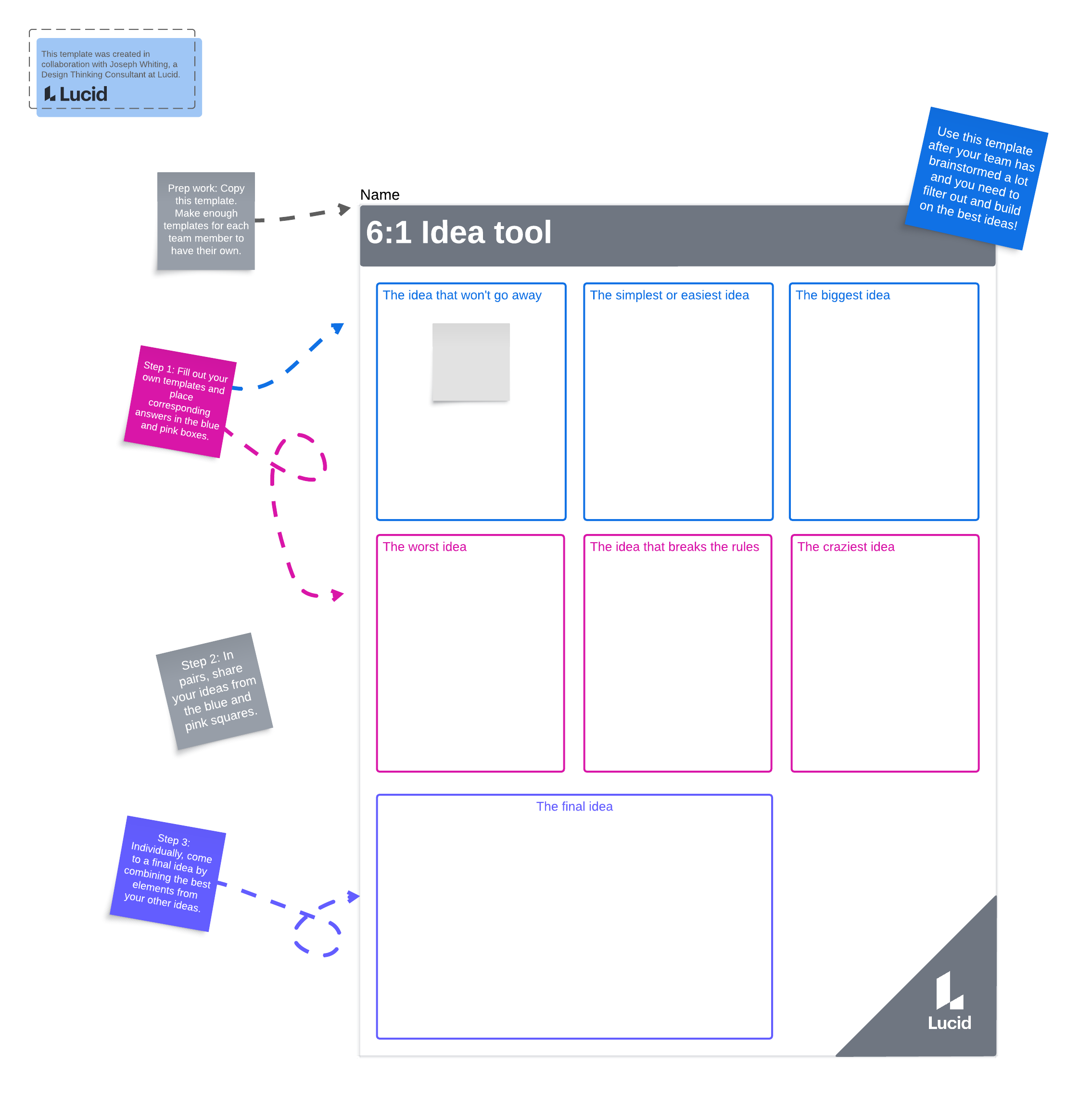
4. Random words brainstorming
Random word brainstorming is a technique in which teams generate ideas by associating random words with the topic or problem they’re exploring. This can help trigger new perspectives and fresh connections. The best part of this random words brainstorming template is that it really helps break down mental barriers that can be blocking new ideas. There are no right or wrong answers, and it’s fascinating to discover what the brain associates with random words.
How it works:
- Define the topic or problem. Clearly state the topic or problem you want to brainstorm ideas for. For example, "Increasing customer engagement for a new product."
- Use a random word generator tool or any method you prefer to generate a list of unrelated words. Write down around 6-10 random words that are not directly related to the topic.
- Take one random word at a time and associate it with the topic or problem you defined. Write down any ideas or connections that come to mind, even if they seem unrelated or unconventional. Repeat this process for each random word. As an example, for the word “ocean,” one idea could be “Use ocean-inspired imagery and storytelling to capture customer attention.”
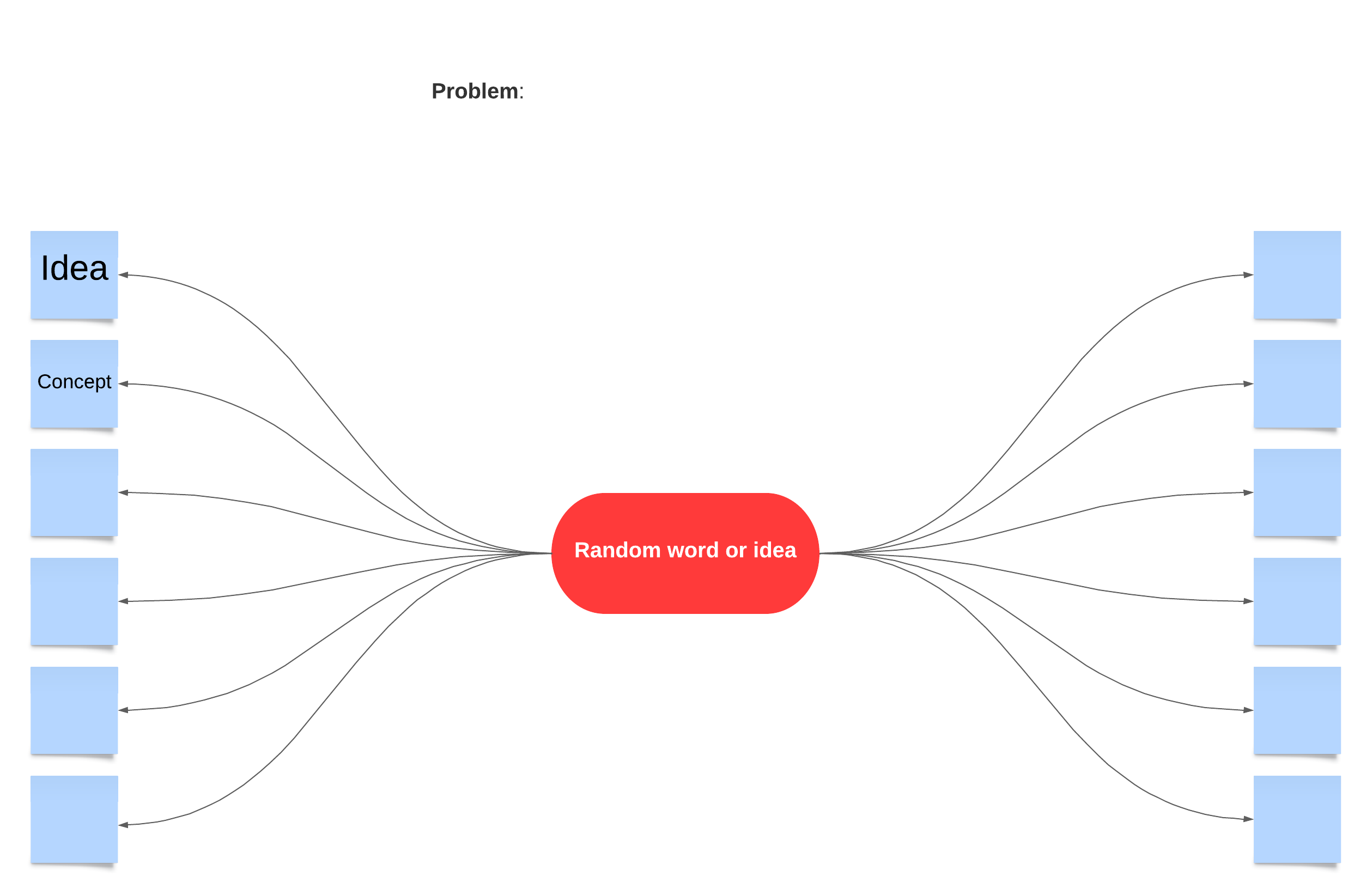
5. Lotus diagram
A lotus diagram is a visual tool that helps organize and structure ideas or information around a central theme or topic. It is named after the lotus flower, which has multiple layers of petals that unfold gradually. The lotus diagram template consists of a central sticky note that represents the main topic or theme and surrounding sticky notes that branch out from the central circle. Each sticky note represents a subtopic or idea related to the main theme. These subtopics can be further expanded with additional sticky notes.
How it works:
- Identify the main theme or topic. Determine the central idea or theme you want to explore. This could be a problem, a concept, a project, or any subject that requires brainstorming or organizing ideas. Add this to the center sticky note.
- Around the central sticky, input subtopics or ideas related to the main theme in the colored sticky notes. These subtopics can be the major categories or aspects that you want to explore further. Write specific ideas or details related to each subtopic in the surrounding sticky notes.
- Analyze the connections and relationships between different subtopics and ideas within the diagram. Look for patterns, commonalities, or gaps in your understanding. Synthesize the information to gain insights or identify potential solutions.
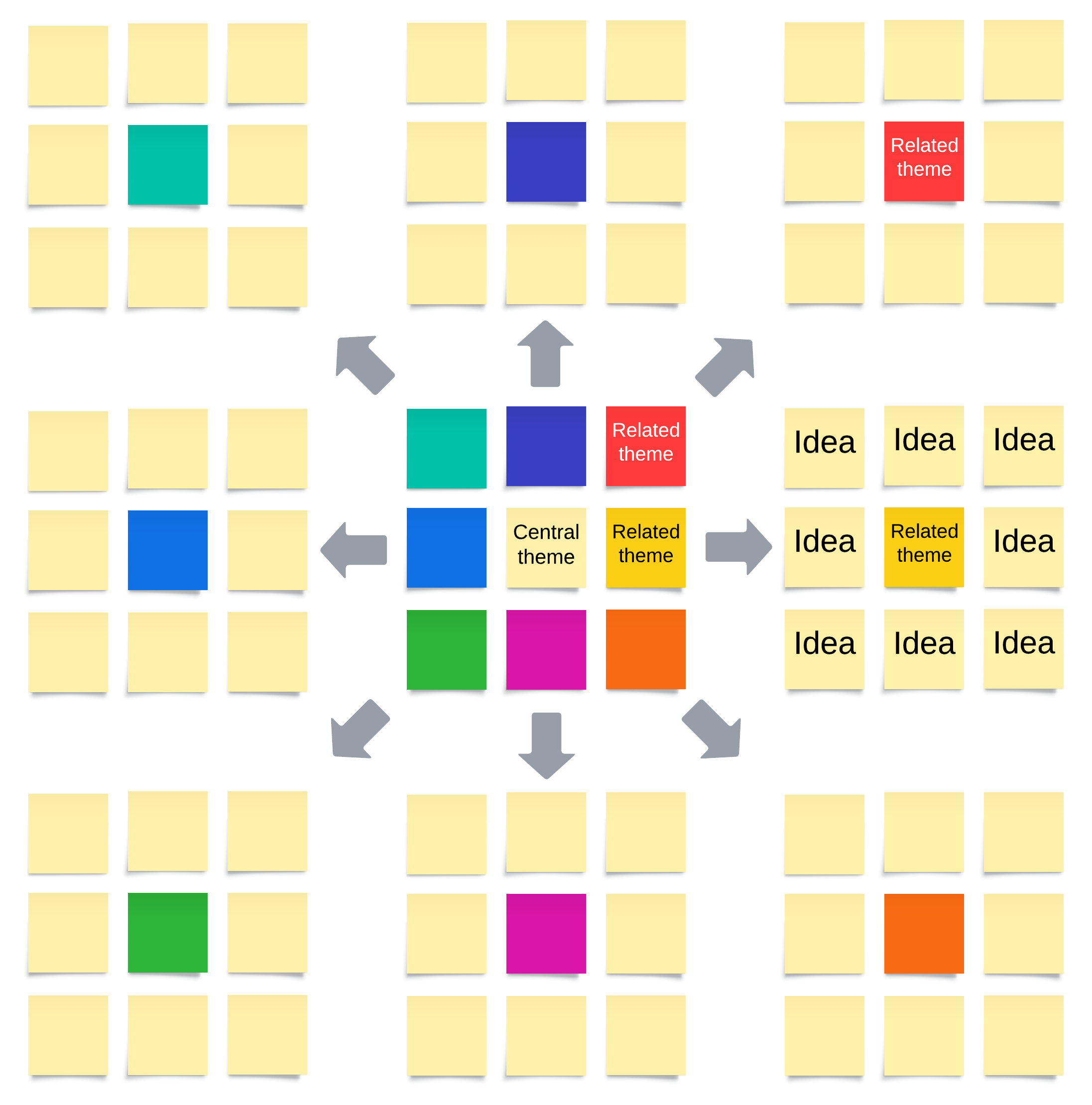
6. Facilitated brainstorm
There’s a fine line between too little guidance during a brainstorming session (which can lead to an awkward silence and few ideas) or too much guidance (which equals restriction). The facilitated brainstorm template is a nice balance. It involves a facilitator who leads the brainstorming session, encourages participation, and ensures that the process is effective and productive.
How it works:
- Define the objective. Clearly articulate the goal or objective of the brainstorming session. It could be to generate ideas for a new product, solve a particular problem, or explore innovative solutions. Add this under “our session purpose.”
- Next, set the timer for five minutes and instruct team members to brainstorm in the divergent zone. Use collaborator colors to keep track of ideas.
- Move onto the “Groan Zone” and push boundaries before coming up with conclusions.

If your recent brainstorming sessions have been lacking, don’t give up—try switching things up!

Browse even more brainstorming templates.
Go nowAbout Lucidspark
Lucidspark, a cloud-based virtual whiteboard, is a core component of Lucid Software's Visual Collaboration Suite. This cutting-edge digital canvas brings teams together to brainstorm, collaborate, and consolidate collective thinking into actionable next steps—all in real time. Lucid is proud to serve top businesses around the world, including customers such as Google, GE, and NBC Universal, and 99% of the Fortune 500. Lucid partners with industry leaders, including Google, Atlassian, and Microsoft. Since its founding, Lucid has received numerous awards for its products, business, and workplace culture. For more information, visit lucidspark.com.
Related articles
Does brainstorming work?
In this blog post, we will explore the different types of brainstorming and tips for making your next brainstorming session more effective.
How to save your project with a premortem brainstorm
In this article, we will discuss what a premortem is and how to conduct a premortem analysis.
